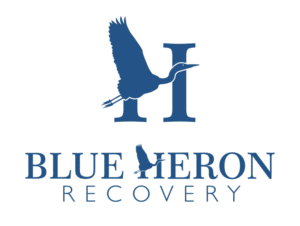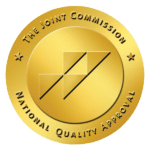Substance use prevention is most effective when it starts early. At Blue Heron Recovery in San Antonio, we understand the life-changing impact that early intervention can have on children, families, and entire communities. School-based prevention programs are one of the most powerful tools we have to protect the next generation from the devastating effects of addiction.
Why Early Prevention Matters
Research shows that substance use often begins much earlier than most people realize. According to the Substance Abuse and Mental Health Services Administration (SAMHSA), nearly 40% of children have tried alcohol by the age of ten (Johnston et al., 2019). This early exposure increases the risk of long-term substance use disorders and related health problems.
The National Institute on Drug Abuse (NIDA) emphasizes that early drug use significantly raises the risk of addiction (NIDA, 2020). The earlier a child begins experimenting with drugs or alcohol, the more likely they are to develop substance dependence later in life.
Key Statistic:
-
Children who begin drinking before age 15 are four times more likely to develop alcohol dependence compared to those who start at age 21 or later (CDC, 2023).
What Are School-Based Prevention Programs?
School-based prevention programs are structured, age-appropriate education efforts that aim to:
-
Prevent the onset of substance use
-
Promote healthy decision-making
-
Strengthen emotional regulation and coping skills
-
Build resistance to peer pressure
These programs are often incorporated into health classes, special assemblies, and extracurricular activities. Some schools even offer prevention-focused lessons starting in preschool, reinforcing positive behaviors before risky habits can develop.
Drama-Based Education: A Proven Method
One innovative approach is drama-based education, which uses role-playing, performances, and interactive storytelling to engage students emotionally. According to research published by BioMed Central, drama-based prevention programs significantly improve student participation and knowledge retention (McArdle et al., 2019). Students who actively participate in prevention activities are more likely to internalize the message and make healthier choices.
Key Components of Successful School-Based Prevention Programs
The most effective school-based prevention efforts typically include:
1. Age-Appropriate, Long-Term Curriculum
-
Prevention lessons should begin as early as preschool and continue through high school.
-
Programs should evolve with the cognitive and emotional development of students.
2. Family and Community Involvement
-
Studies show that when parents and community leaders are involved, prevention efforts are significantly more successful (NIDA, 2020).
3. Social-Emotional Learning (SEL)
-
Teaching students skills like self-awareness, emotional regulation, and healthy communication can reduce the likelihood of substance use.
4. Peer-Led Discussions
-
Programs that incorporate peer education often see better engagement, as students may be more receptive to hearing from their peers.
5. Consistent Reinforcement
-
Prevention messaging must be repeated and reinforced across grade levels to truly shift behaviors over time.
The Role of Community in Prevention
In addition to schools, community-based initiatives play a vital role in substance use prevention. Events like the Substance Abuse Prevention Summit bring together educators, healthcare providers, military personnel, and local leaders to share resources and strategies that strengthen prevention efforts.
These collaborative programs ensure that prevention messaging is consistent across all parts of a child’s life — at school, at home, and in the community.
Why Early Intervention Works
According to the Centers for Disease Control and Prevention (CDC), prevention programs can delay the onset of first use by as much as two years or more. This delay significantly reduces the risk of addiction later in life.
Early intervention can:
-
Lower rates of underage drinking
-
Reduce experimentation with tobacco and drugs
-
Improve mental health outcomes
-
Strengthen family bonds
-
Build lifelong resilience
By targeting behaviors and risk factors early, we can help young people develop healthier decision-making skills that last well into adulthood.
Blue Heron Recovery’s Commitment to Prevention
At Blue Heron Recovery, we believe prevention is just as important as treatment. Our team is committed to supporting local schools, community organizations, and families in San Antonio with resources, education, and guidance on substance use prevention.
We encourage schools to invest in evidence-based prevention programs and urge families to stay involved in their children’s lives. Together, we can create a safer, healthier future for the next generation.
Sources:
-
Johnston, L.D., et al. (2019). Monitoring the Future: National Survey Results on Drug Use, 1975–2018. National Institute on Drug Abuse.
-
National Institute on Drug Abuse (NIDA). (2020). Principles of Substance Abuse Prevention for Early Childhood.
-
McArdle, S., et al. (2019). Drama-based education to motivate participation in substance use prevention. BioMed Central Public Health.
-
Centers for Disease Control and Prevention (CDC). (2023). Youth Risk Behavior Survey Data Summary & Trends Report: 2011–2021.




